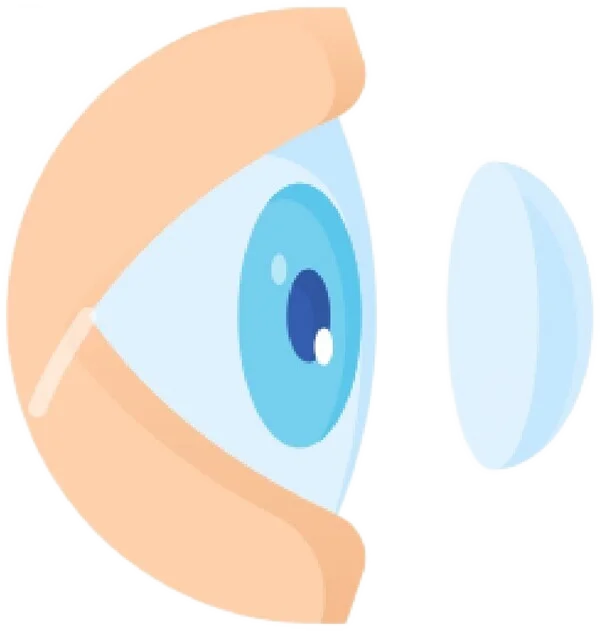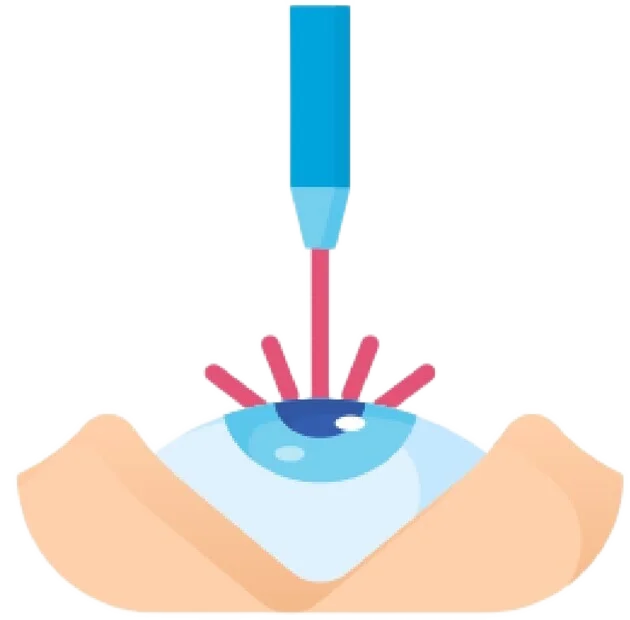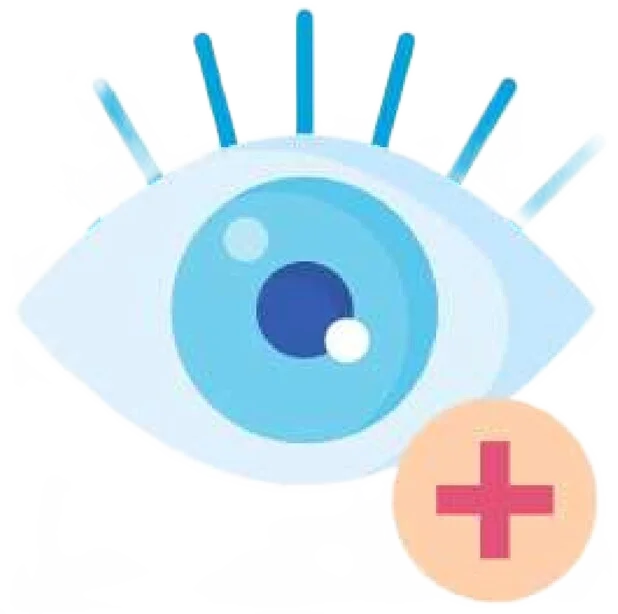What Is Ptosis?
Ptosis is a condition where one or both upper eyelids droop lower than normal, sometimes partially covering the pupil and interfering with vision. The drooping can range from barely noticeable to severe, and it may be present from birth (congenital) or develop later in life (acquired).
In adults, ptosis most often occurs due to age-related stretching or weakening of the levator muscle — the muscle responsible for lifting the eyelid. Other causes include eyelid trauma, neurological conditions, or muscle disorders. In children, congenital ptosis is often linked to improper development of the levator muscle.
While mild cases may only affect appearance, more significant drooping can impact vision and daily activities. Treatment depends on the cause and severity, but surgery is the most common and effective solution, helping to restore both function and appearance. Early assessment is important, particularly in children, to prevent vision problems such as amblyopia (lazy eye).
Causes and Risk Factors of Ptosis
What Causes Ptosis?
Ptosis develops when the muscles, tendons, or nerves responsible for lifting the upper eyelid are weakened, stretched, or otherwise impaired. The condition can be present at birth (congenital) or acquired later in life, and the severity often depends on the underlying cause.
Key causes and risk factors include:
- Ageing
Gradual stretching or weakening of the levator muscle is the most common cause, especially in adults over 60. - Congenital ptosis
Present from birth due to underdevelopment or improper function of the levator muscle. - Eyelid injury or trauma
Damage to the muscles, tendons, or nerves in the eyelid area can lead to drooping. - Neurological conditions
Disorders such as Horner’s syndrome, myasthenia gravis, or third nerve palsy can disrupt eyelid control. - Eye surgery side effects
Procedures like cataract surgery may stretch or weaken the eyelid’s lifting structures. - Muscle diseases
Conditions affecting muscle strength and tone, such as muscular dystrophy, can contribute to ptosis. - Family history
Genetic predisposition can increase the likelihood of developing ptosis.
Identifying the exact cause helps guide the most effective treatment plan, whether surgical or non-surgical. In children, prompt diagnosis is especially important to prevent long-term vision issues.
Types of Ptosis
The Different Types of Ptosis
Ptosis is classified according to its cause and the structures involved in lifting the upper eyelid. Understanding the type helps guide the best treatment approach, particularly in distinguishing between congenital and acquired forms.
Involutional Ptosis (Aponeurotic Ptosis)
Description:
The most common type in adults, caused by stretching or thinning of the levator aponeurosis (the tendon-like structure connecting the levator muscle to the eyelid). Often linked to ageing, long-term contact lens wear, or prior eye surgery.Who it affects:
Primarily older adults, but can occur in younger adults with certain risk factors.Speed of progression:
Gradual, worsening over time.
Congenital Ptosis
Description:
Present from birth due to improper development or function of the levator muscle.Who it affects:
Newborns and infants.- Speed of progression:
Usually stable, but can affect vision if severe. Early intervention may be needed to prevent amblyopia (lazy eye).
Neurogenic Ptosis
Description:
Caused by problems with the nerves controlling the eyelid muscles, such as third nerve palsy or Horner’s syndrome.Who it affects:
Can occur at any age depending on the underlying neurological condition.- Speed of progression:
Sudden or gradual onset, depending on cause.
Myogenic Ptosis
Description:
Results from primary muscle weakness, as in conditions like myasthenia gravis or muscular dystrophy.Who it affects:
Varies with the underlying muscle disorder.Speed of progression:
Often fluctuating or progressive over time.
Mechanical Ptosis
- Description:
Caused by excess weight on the eyelid from tumours, swelling, or scarring that prevents full opening. - Who it affects:
Anyone with eyelid masses or significant swelling. - Speed of progression:
Usually gradual, but can be sudden if caused by injury or inflammation.
Early Signs & Symptoms
Common Symptoms of Ptosis
Recognising the signs of ptosis early can help prevent vision problems, especially in children where untreated drooping eyelids may lead to amblyopia (lazy eye). Symptoms may be constant or fluctuate depending on the underlying cause.
- Drooping of one or both upper eyelids
The most obvious sign — the eyelid margin sits lower than normal and may partially cover the pupil. - Obstructed vision
In moderate to severe cases, the drooping lid blocks part of the visual field, making tasks like reading or driving difficult. - Raised chin or head tilt
Some patients naturally lift their chin or tilt their head back to see clearly beneath the drooping eyelid. - Eye fatigue
Extra effort to keep the eyelids open can lead to a tired or heavy feeling around the eyes, particularly toward the end of the day. - Uneven eyelid height
One eye may appear more “closed” than the other, affecting facial symmetry. - Brow strain
Frequent raising of the eyebrows to lift the eyelids can cause forehead discomfort or tension headaches. - Reduced peripheral vision
In severe cases, side or upper field vision can be impaired.
Diagnosis and Treatment of Ptosis
Ptosis is usually diagnosed during a comprehensive eye examination, where the ophthalmologist measures eyelid position, assesses muscle strength, and checks for any impact on vision. In children, extra attention is given to detecting signs of amblyopia (lazy eye) that may result from a blocked visual axis.
Mild cases that do not affect vision may be monitored over time, particularly in older adults where the condition is stable. If ptosis interferes with vision, causes eye strain, or affects appearance significantly, surgery is often the recommended treatment. The most common approach involves tightening or reattaching the levator muscle to lift the eyelid. In cases of severe congenital ptosis or very weak levator muscles, a sling procedure may be performed, using the forehead muscles to assist eyelid elevation.
These procedures are usually carried out under local anaesthesia for adults and general anaesthesia for children, often on an outpatient basis. Surgical outcomes are generally excellent, improving both vision and eyelid symmetry.
Why Timely Diagnosis Matters
Ptosis Can Lead to Vision Problems if Left Untreated
When the upper eyelid droops significantly, it can block part of the visual field, forcing patients to strain their eyes or adopt unnatural head positions to see clearly. In children, untreated ptosis can cause amblyopia (lazy eye), which may result in permanent vision loss if not addressed early. Prompt diagnosis and treatment help protect eyesight and prevent these complications.
Early diagnosis allows your ophthalmologist to:
- Determine the underlying cause and type of ptosis
- Identify whether vision is being obstructed
- Prevent complications such as amblyopia in children
- Offer temporary or non-surgical measures when appropriate
- Recommend surgery at the right stage for the best results
- Preserve normal eyelid function and facial symmetry
Early intervention not only protects vision but also improves quality of life and overall eye comfort.
Continue Learning About Other Eye Conditions
Other Eye Conditions
The eyes are the most complex sensory organ in our bodies. The eyes provide vision by recording images of our surroundings that the brain will interpret. Although the eye measures only about an inch...
Xanthelasma
Xanthelasma (pronounced zan-the-laz-ma) are fatty lumps that tend to form near the inner corners of the upper and lower eyelids. In many cases they are due to high cholesterol levels in...
Worried About Your Vision?
Schedule a consultation with Mr. Mo Majid to evaluate your eye health.
Quick Answers About Ptosis
Can ptosis improve without treatment?
Mild ptosis that doesn’t affect vision may remain stable over time, but significant drooping typically does not resolve on its own. In most cases, surgery is needed for lasting correction.
Is ptosis surgery painful or risky?
Ptosis surgery is generally a safe outpatient procedure performed under local anaesthesia for adults or general anaesthesia for children. Most patients experience minimal discomfort and enjoy excellent functional and cosmetic results.
What happens if ptosis is left untreated?
If untreated, ptosis can cause ongoing eye strain, obstructed vision, and, in children, the risk of amblyopia (lazy eye), which may lead to permanent vision loss.







